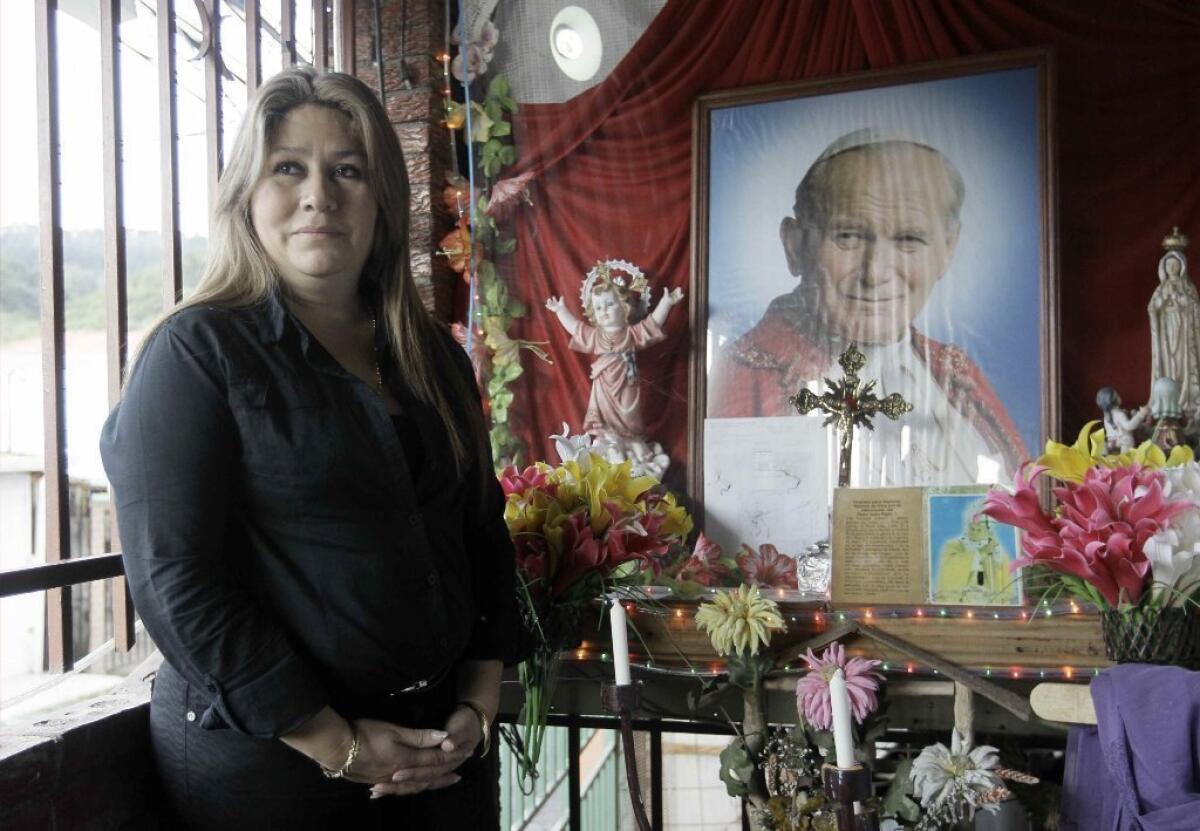Pope Francis’ balanced sainthood ticket

- Share via
E.J. Dionne of the Washington Post has congratulated Pope Francis for what in a political context might be called a balanced ticket. By deciding to confer sainthood simultaneously on Pope John Paul II and Pope John XXIII, Dionne writes, Francis has pleased two constituencies in the church.
“On the whole,” Dionne says, “conservative Catholics will cheer swift sainthood for John Paul, while progressive Catholics will welcome the news that an overly long process of elevating John to the same status had reached its culmination. One for one side, one for the other -- it’s a good formula for harmony, something Catholicism needs right now.”
That’s not the sum of Dionne’s analysis. He also writes that the twofer canonization emphasizes that some of what people admire about John Paul II -- such as his denunciation of anti-Semitism -- is rooted in the Second Vatican Council called by John XXIII. “Without Pope John,” Dionne writes, “there would not have been the John Paul we came to admire.”
SLIDE SHOW: Pope Francis’ small steps to lift liberals’ hearts
But back to the ticket balancing. It’s easy to see why liberal Catholics identify with John XXIII. More puzzling is the affection of conservative Catholics for John Paul II. Unlike Benedict XVI, JPII didn’t emphasize the revival of the pre-Vatican II Latin Mass (though he did make provision for the wider use of the old rite). His own approach to church ritual was catholic with a small “c,” and some of the Masses he celebrated on his globetrotting pilgrimages drew on indigenous customs that drove traditionalists crazy.
But perhaps the least conservative feature of JPII was his attitude to the papacy itself. As I wrote in a 1999 profile of the pope for Slate:
“In a 1995 encyclical, John Paul II broached the possibility that, in the interests of Christian unity, he or his successors might ‘find a way of exercising the [papal] primacy which, while in no way renouncing what is essential to its mission, is nonetheless open to a new situation.’ He went on to note that in the first 1,000 years of Christianity, the bishop of Rome ‘acted by common consent as moderator’ when Christians disagreed about belief or discipline. This tantalizing suggestion of a scaled-down papal office was seized on by the Anglican-Roman Catholic International Commission this May in a report that suggested Anglicans should accept a circumscribed papal primacy as a ‘gift to be shared.’ ”
I did note that there was a certain tension between JPII’s idea of a downsized papacy and his actual execution of the office. (“Would a ‘tiebreaker’ bishop of Rome have any use for an airplane or a Popemobile?”) Even so, it was a dramatic departure from the papacy as it had been understood for hundreds of years.
Lots of people, including Dionne, have compared Pope Francis to John XXIII. But Francis also seems to be taking a page from John Paul II’s encyclical floating the idea of a more modest papacy. To the disgruntlement of some conservative Catholics, Francis refers to himself as “the bishop of Rome,” a title that even many Protestants are happy to accord him.
ALSO:
Night terrors of the uninsured
Pope John Paul II and the trouble with miracles
Edward Snowden, a pawn in Venezuelan politics
More to Read
A cure for the common opinion
Get thought-provoking perspectives with our weekly newsletter.
You may occasionally receive promotional content from the Los Angeles Times.










